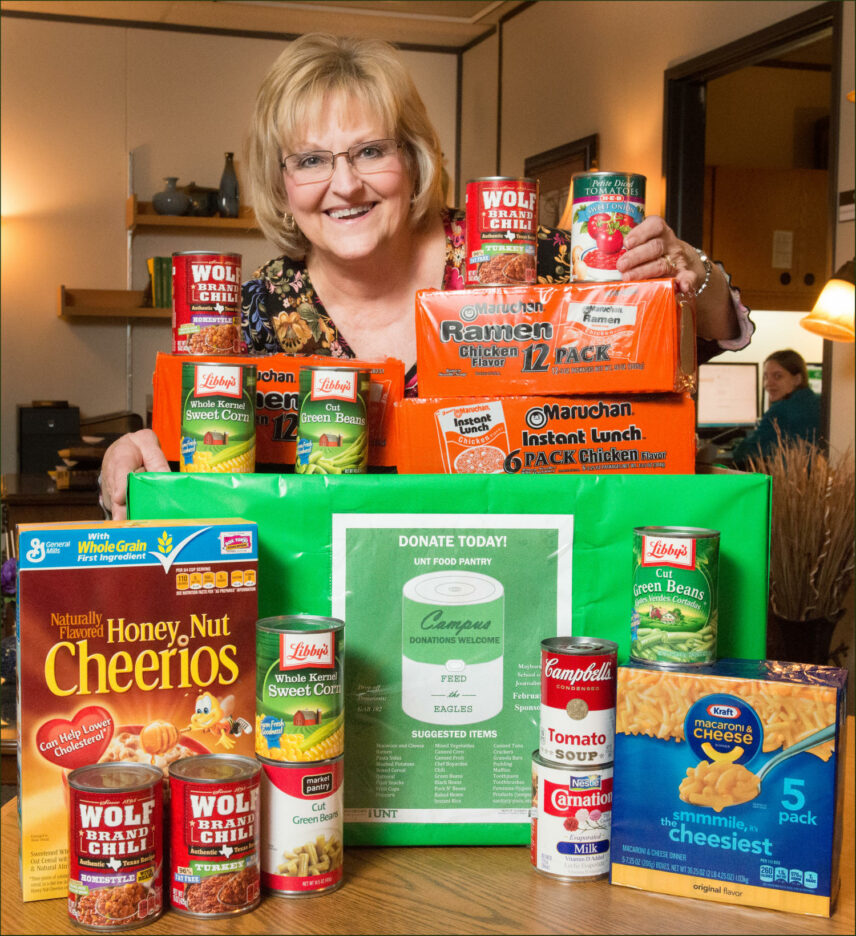Article begins
“Food became like the last thing on my list, so to speak, because it was based on my need. I didn’t have to pay other people because not paying rent would get me evicted, but not eating would just impact me, not anyone else.” —Anne, a 35-year-old doctoral student, echoed the experiences many students had during the height of the 2020 COVID-19 pandemic, which is still a struggle at the time of writing, as the Delta variant surges across the country. As businesses shuttered and employment came to a halt, food insecurity became a real issue for many residents in the United States, especially college students. Financial hardships meant students, several residing off-campus and supporting their own families, had to choose between paying for medical care, housing, transportation, and food. Although food may have been the first thing on each student’s mind, it was often the last item on the list to pay since more pressing priorities were at the forefront of their survival.
To understand the effects that the pandemic had on college student food access, graduate school candidates from the Department of Anthropology at the University of North Texas (UNT) produced a study in the fall of 2020 under the direction of Lisa Henry. The report titled, Food Insecurity in College During the COVID-19 Pandemic was produced for the UNT dean of students to understand how the pandemic affected student access to food sources and their familiarity with the UNT Food Pantry. Research was conducted remotely via the Zoom platform, which permitted many participants to connect with graduate researchers from locations as far as the Netherlands. This was quite an advantage since student investigators were able to conduct a study from the comfort of their own home and give respondents the opportunity to be interviewed in a location of their choosing.

Using a semi-structured interview method, 25 individual participants and one focus group answered major research questions that focused on food insecurity experiences within the UNT student community. Questions included how COVID-19 impacted student finances and health, what coping strategies were used to deal with food insecurity obstacles, and if students were familiar with food resources such as the UNT Food Pantry which 17 percent of participants shared they had only heard of by word of mouth.
Findings from the study showed that COVID-19 hit students hard financially, academically, mentally, and physically—which all factored into their food insecurity experience. Twenty-four percent of those interviewed expressed that being unable to access food led to feelings of anxiety and depression while 52 percent of student respondents shared they were not able to focus properly on their studies because they were hungry. To help ease food insecurity matters, students often switched to more carbohydrate-rich diets (80 percent of participants), frozen meals, food rationing (28 percent of participants) and home-cooked meals (48 percent of participants). Unfortunately, being food insecure exacerbated eating disorders for a few interlocutors since access to fresh foods was limited locally and financially.
Throughout the experience, 76 percent of participants found support among friends and family who helped with food access and financial assistance. However, 16 percent of students that found themselves to be food insecure reported helping their own friends and family who were also financially impacted and unable to access food sources themselves. In these circumstances, students along with food insecure friends and family used a reciprocity-based system by providing one another with whatever means they could to ensure everyone remained afloat during the pandemic. Such a dynamic may be attributed to former food insecurity experiences since 75 percent of respondents that discussed food insecurity obstacles during the pandemic with those close to them had previously experienced food insecurity at some point in their life. Discussing food insecurity was difficult for 10 of the participants since they felt shame for not being able to access food and did not want to worry loved ones with their struggle.
The key to help students combat the issue of food insecurity during the pandemic seemed to lie in increasing awareness of the resources available to them via community programs and the on-campus food pantry at UNT. Methods such as email and word of mouth appeared to be most effective for students to learn about food resources available to them with about 32 percent of interlocuters stating that email helped them learn that free food was available within the community. Yet that does not mean that all who were interviewed found email to be the most effective method. Additional participants noted that they did not pay mind to incoming emails from UNT during the pandemic, so they could not confirm receiving communication about community food resources or the UNT Food Pantry. This was also true for financial resources available to students through the university.

As a solution, 28.5 percent of respondents suggested social media platforms such as Facebook, Snapchat, Twitter, and Instagram be used to help students become aware of the support services that were available. Information provided by campus staff and text messages were also found to be viable methods to communicate with students. Additional solutions included making the UNT Food Pantry more visible to students by implementing more signage around campus and class announcements through class syllabi or by teaching assistants and professors. Class announcements may be most effective in reaching a large number of students since 70 percent of participants noted they were unaware they qualified for free food services as they perceived such programs to only be available for students with severe financial difficulties.
Due to financial circumstances, international students in the study often found themselves to be food insecure. Since not all forms of financial assistance are available to students from abroad and work may be restricted to on-campus opportunities only, several international student participants expressed difficulties in accessing food due a lack of money. One participant, Ali, noted that if students were made aware of community and on-campus resources available to them during the school orientation process, it would help ease the stress of searching for their next meal. Furthermore, providing students with gift cards or food vouchers to local stores would also be an ideal solution to food insecurity issues.
As the world continues to go through waves of the pandemic, and new COVID variants continue to make their way through communities, access to a healthy meal can be difficult for many college students, especially international students whose only financial support system is too far for comfort. Stretching meals, filling up on carbohydrate-rich foods, and skipping meals can wreak havoc on the health of any human, but especially students who are expected to keep up with the demands of college life while trying to balance family and financial obligations that may exceed limited budgets. Although food resources may be available to community members, awareness of such programs is not always obvious to college students, which may lead to empty stomachs and the inability to focus. The possible solution to making food resources more visible to college students? Communicating with them through the social media platforms they tend to use most often and having on-campus staff relay the message through syllabi or in-person methods can ensure students get through the pandemic, or any challenging situation, while in college without feeling hungry.
Author’s note: Participants names are pseudonyms.

